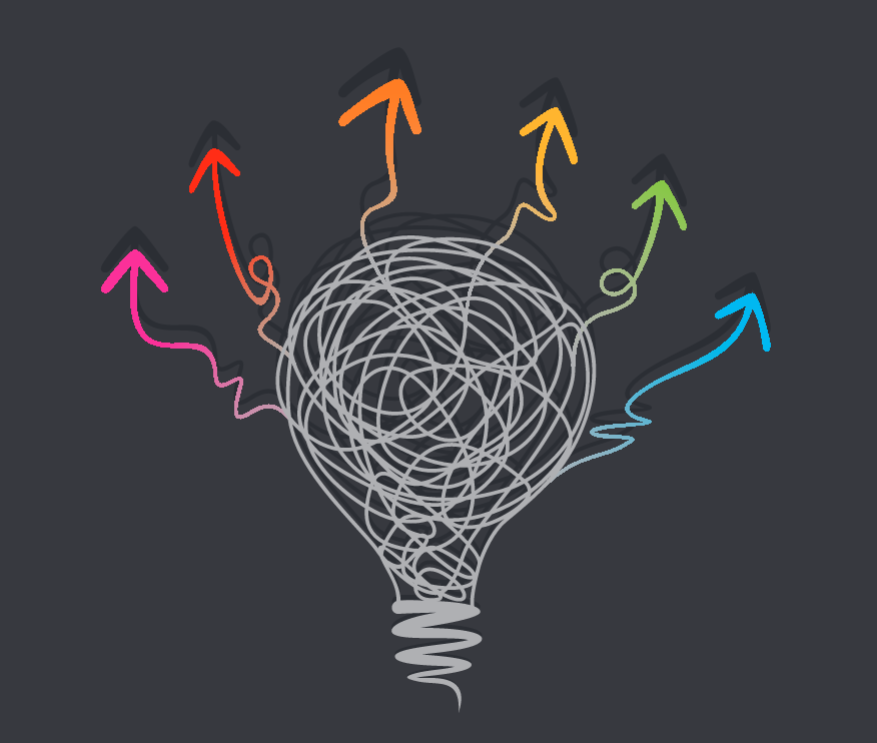Advances in neuroscience are revolutionizing our approach to education, and they have particularly weighty implications for the way we teach math. They challenge our basic assumptions about the subject, some of which have discouraged a lot of students from sticking with it.
The most popular and damaging of these assumptions has been that some people can do math and others just can’t.
Parents believe it, some teachers believe it, and soon enough, the students believe it too. Luckily, the evidence against this notion is piling up, thanks to recent discoveries about human brain plasticity.
Some of you might have taken one of London’s famous black cabs, but you may not know how qualified the drivers are. It turns out that to become a London cab driver you have to study for between two and four years. At the end of that time you take a test with the beautiful name, “The Knowledge,” which requires that you know 25,000 streets and 20,000 landmarks in Central London. This process, neuroscientists have found, significantly expands the driver’s hippocampus, the area of the brain that specializes in spatial information. When the drivers retire, their hippocampus shrinks again. We never knew that the brain was that flexible.
Around the same time as these studies were emerging, a nine-year-old girl had half her brain removed — a hemisphere — because she was having seizures the doctors couldn’t control. The doctors and scientists expected her to be paralyzed for life, as that side of the brain controls your physical movement, but she stunned them by essentially re-growing the missing side. The connections came back so quickly that within months she was running around and playing again.
Another study that is very important for educators is a three-week training program, where people working for 10 minutes a day changed the permanent structure of their brains. Examples like this show that many of the limits we place on human capacity are self-imposed.
Every child can do well in math — all the way to calculus. Why don’t they, then?
The simple answer is that we don’t approach the subject in the right way, conceptually or philosophically. Schools continue to single out who is good at math — and who is not — at a very young age. That has to change.
Another myth I think is important to confront is this notion of a “wall” in math. According to this popular idea, you can take all the math classes you like until you hit your personal wall, and then you can’t go any further. Big news: There is no “wall.”
Carol Dweck, a Stanford colleague I work with, wrote an influential bestseller in 2006, which used a large body of research to demonstrate that everyone has one of two mindsets. People with a growth mindset believe that the harder you work the smarter you’ll get; people with a fixed mindsetbelieve that you’re either smart or you’re not. Approximately half the people in the U.S. have a fixed mindset, and the other half have a growth mindset. More people have a fixed mindset about math than any other subject. Carol has found that kids with growth mindsets achieve more. They do so because a growth mindset goes along with certain behaviors — they are more persistent and more willing to learn from mistakes.
The way we praise kids helps determine which mindset they develop. This is a big one for parents; I’ve had to change the way I talk to my own kids. Kids get a fixed mindset from fixed praise. When we praise kids for being smart, they think, oh good, I’m smart; and then, later, when they mess up, as they will, they think, oh, I’m not so smart. That fixed idea is damaging, either way.
It’s very important not to praise kids for what they are, but only for what they do. It is fine to say, “It’s great that you learned that,” but not, “You are so smart.”
We know that fixed mindset thinking affects kids from across the achievement spectrum.
The biggest group of students with a fixed mindset are high-achieving girls. Indeed, this is one of the big reasons girls opt out of advanced science and math courses.
We love the discourse of smartness and giftedness, but we have to let go of it. The more a field values the idea of giftedness, the fewer female PhDs are in the field. Claude Steele, a former colleague of mine at Stanford, found that when girls take math tests, just marking off their gender makes them more likely to underachieve. The stereotypes about women and math are so strong that they’re in the air all the time.
The Programme for International Student Assessment (PISA) team at the Organisation for Economic Co-operation and Development (OECD) has collected a lot of data on how kids approach math, their beliefs about math, and how that relates to their achievement. One of the big findings is that the lowest achieving kids in the world are the memorizers. The highest achieving kids are the ones who see math as a subject of big ideas. Those kids, incidentally, are also less afraid of making mistakes.
We now know that making math mistakes grows your brain. MRI scans of people taking math tests find that every time the test-taker makes a mistake, a synapse fires in their brain. There are actually two possible synapses; the first one comes from people making a mistake, and the second one comes from noticing they’ve made a mistake.
Further, we now know that those are the very best times for brain growth. Telling kids that mistakes are good for them, that mistakes are when their brains grows, can have a liberating effect. Also, it has been established that if you have a growth mindset, and you believe that mistakes are good, your brain will have an enhanced response to making mistakes.
This means that we need kids in math classrooms to do more challenging work, and to make more mistakes. Unfortunately, most math classes in the U.S. are set up so the kids get most of the answers right. Teachers really care about their students; they want them to get everything right, but that isn’t good for them. They need to struggle.
They do not, however, need to be struggling with the clock. This is another crucial thing that neuroscientists are telling us: Math should never be associated with speed.
In fact, we know that timed tests cause a lot of the early onset math anxiety felt by students, especially girls. Mathematical facts are retained in the working-memory section of the brain, and when a person is under stress, the working memory is blocked. Mathematicians are not necessarily fast at math. In fact, some of our greatest mathematicians are not fast at all; they work slowly and deeply with math.
One example I would like to share with you is Laurent Schwartz, who felt dumb in school because he was one of the slowest math thinkers on his class but went on to win the Fields Medal in mathematics. In his autobiography, he wrote:
“Towards the end of the eleventh grade I secretly thought of myself as stupid, and I worried about this a long time. I’m still just as slow. At the end of eleventh grade, I came to the conclusion that rapidity does not have a precise relation to intelligence. What is important is to deeply understand things and their relations to each other…”
We urgently need to dissociate math from speed in classrooms and stop dissuading those children who think slowly and deeply that they can’t do math.
Another valuable discovery is that we learn most powerfully by crossing the brain, when different pathways light up. Researchers have found that the students who do best on math tests are those who use the connections between the brain hemispheres. The perfect brain crossing is when kids interact with numbers while also thinking visually. Short, closed questions convey fixed views of math to students. If we really want to give kids a growth mindset, we have to change the mathematics questions given in classrooms (see www.youcubed.org).
Teachers and parents have to send the right messages. That is critically important. We know that when mothers tell their daughters that they weren’t good at math in school, their daughters’ achievement goes down.
Teachers can be just as discouraging even when they are trying to help by saying things like, “Don’t worry, math isn’t your thing.” But they can also be very encouraging, even with minimal effort. A recent experimental study demonstrates this well. Two groups doing high school English received critical feedback at the end of their English essay. The researchers added one extra sentence of feedback to half the students’ essays. What they found was that kids who got the extra sentence were doing significantly better a year later, particularly students of color. The sentence they added was this: “I am giving you this feedback because I believe in you.”
Teachers need to show students they believe in them, they need to give them opportunities to struggle and fail, they need to communicate that mistakes and struggle are good, and they need to stop deciding who can and who cannot do math.
Such changes would yield particularly impressive results in math classes, where there is such a wide gulf between what students think they can do and their actual proficiency.




